Imagine a business where every task runs smoothly, new employees are quickly onboarded, and quality is consistently high. This isn’t just a dream; it’s a reality for businesses that leverage the power of Standard Operating Procedures (SOPs).
SOPs are essentially documented instructions that detail the “how-to” of any given task or process. They act as a roadmap, ensuring everyone in the organization approaches tasks in the same way, achieving consistent results, and maximizing efficiency.
While the benefits of SOPs are undeniable, many businesses struggle to implement them effectively. There can be a perception that SOPs are unnecessary or a waste of time. However, this couldn’t be further from the truth.
In this blog post, we’ll delve into the most common challenges businesses face when creating SOPs, including:
- Lack of perceived value
- Reliance on individual expertise
- Resistance to change
- Lack of time and resources
- Unclear ownership
- Difficulty capturing tacit knowledge
But fear not! For each challenge, we’ll also provide practical solutions to help you overcome these hurdles and unlock the full potential of SOPs for your business. Keep reading to discover how SOPs can become your secret weapon for growth and success.
Article Outline
Challenge 1: Lack of Perceived Value
Especially for smaller businesses, SOPs can sometimes be seen as an unnecessary burden. There might be a feeling that everyone already knows how to do their jobs or that formalizing procedures is too time-consuming. Let’s explore why this perception is off-the-mark.
- Focus on the Hustle: Small business owners often wear many hats and prioritize immediate tasks over long-term planning. Creating SOPs might seem like a luxury they can’t afford.
- We Already Know How: In close-knit teams, the “tribal knowledge” of experienced employees can be seen as sufficient. However, this knowledge can be subjective and isn’t readily transferable to new hires.
Here’s the truth: SOPs are a powerful investment in your company’s future.
But Why Bother?
The truth is, SOPs offer a multitude of benefits that can propel your business forward. Here are just a few key advantages:
- Consistency: SOPs ensure everyone is on the same page, leading to consistent quality in tasks and deliverables. No more wondering if “John does it this way, or does he do it like Mary?”
- Efficiency: Clear, documented procedures minimize wasted time and rework. Employees can quickly reference the SOP for guidance, freeing up valuable time for more strategic tasks.
- Scalability: SOPs pave the way for smooth onboarding and training of new hires. This allows your business to scale up quickly and efficiently without sacrificing quality.
- Knowledge Retention: SOPs act as a repository of institutional knowledge, preventing valuable expertise from walking out the door with a departing employee.
Real-World Examples:
Take a small bakery, for instance. Imagine a situation where frosting recipes or baking times varied slightly between bakers. SOPs can ensure each batch of cookies looks and tastes delicious every single time. This consistency builds customer loyalty and trust.
Similarly, a small marketing agency could benefit from SOPs for client onboarding, social media management, or email marketing campaigns. These ensure consistent communication and project management, leading to happier clients and a stronger brand reputation.
As you can see, the benefits of SOPs extend far beyond simply following a set of rules. In the next section, we’ll explore another common challenge: reliance on individual expertise.
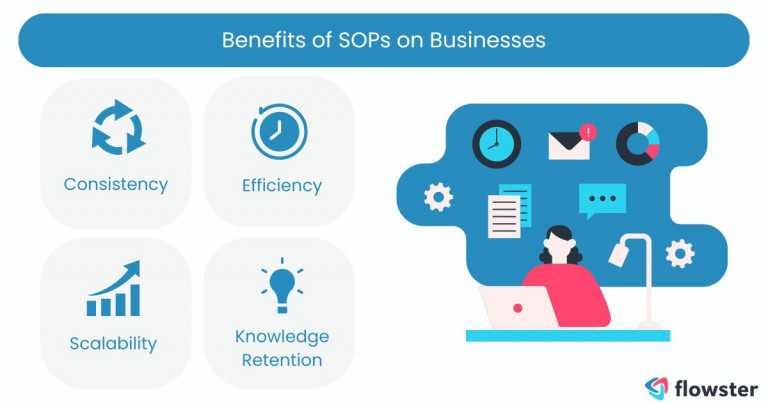
Challenge 2: Reliance on Individual Expertise
In many businesses, a few key employees hold a wealth of knowledge on how things get done. These “go-to” people can answer any question and solve any problem. While this might seem ideal, it creates a hidden vulnerability.
- Single Point of Failure: If a critical employee leaves the company, their knowledge walks out the door with them. This can lead to disruptions, delays, and a drop in quality as others scramble to fill the gap.
- Tribal Knowledge: Institutional knowledge is often passed down informally, leading to inconsistencies and making it difficult for new hires to learn the ropes.
SOPs offer a solution to this over-reliance on individual expertise.
Capturing Knowledge and Ensuring Continuity
By documenting procedures in SOPs, you capture the valuable knowledge of your experienced employees in a transferable format. This ensures:
- Knowledge Transfer: New hires can learn best practices and company procedures quickly and easily, minimizing disruptions and maintaining consistent quality.
- Operational Continuity: SOPs safeguard your business from the loss of key personnel. With documented procedures, operations can continue smoothly even when employee turnover occurs.
While some may resist change, the benefits of SOPs are undeniable. Let’s explore this next hurdle.
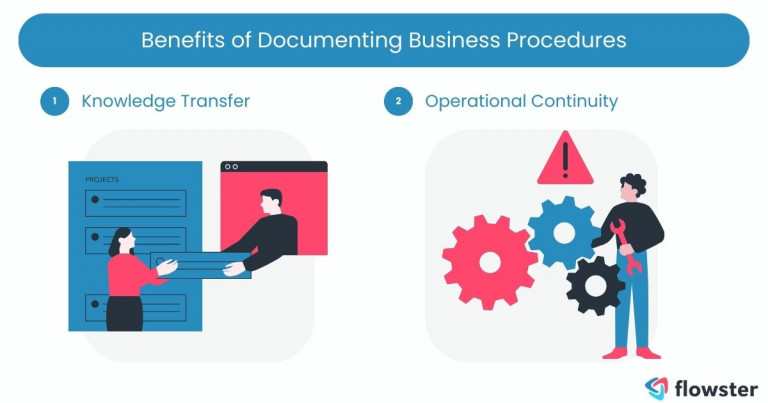
Challenge 3: Resistance to Change
Change can be unsettling, and some employees might worry that SOPs will stifle their creativity or limit their autonomy. It’s important to acknowledge these concerns and approach SOP implementation collaboratively.
- Fear of Micromanagement: Some employees might perceive SOPs as a sign of micromanagement. Emphasize that SOPs are meant to be guidelines, not rigid scripts. They provide a framework for consistency while allowing room for individual initiative.
- “We Already Do It This Way”: Change can disrupt established routines. Encourage open communication and involve employees in the SOP creation process. Their experience and insights are valuable in ensuring the SOPs are practical and effective.
Solution: Collaborative Implementation
The key to overcoming resistance lies in a collaborative approach.
- Get Input: Involve your team members in the SOP creation process. This gives them ownership and a sense of being heard. Their insights can also help ensure the SOPs are practical and user-friendly.
- Open Communication: Address concerns openly and honestly. Explain the benefits of SOPs for both the company and individual employees.
Ultimately, SOPs can actually improve efficiency and free up time for creativity. By streamlining routine tasks, employees have more bandwidth to focus on innovative ideas and problem-solving.
In the next section, we’ll tackle another common obstacle: limited time and resources.
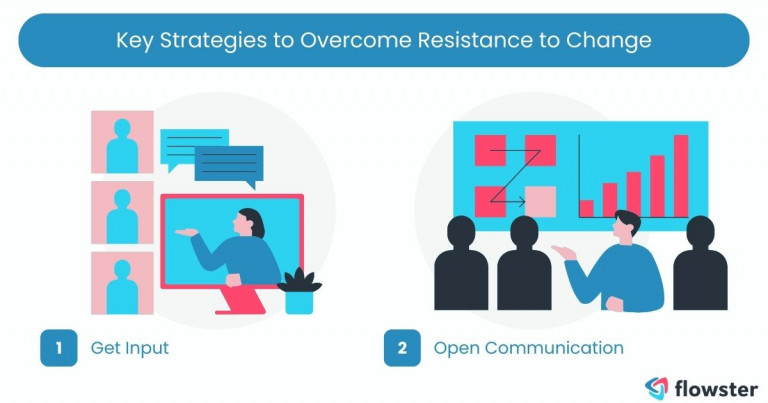
Challenge 4: Lack of Time and Resources
For busy small businesses, carving out time to create SOPs can feel like an impossible feat. Team members are already stretched thin, and the upfront investment of time can seem daunting. However, there are practical steps you can take to develop SOPs on a budget without sacrificing efficiency.
- Start Small, Scale Later: You don’t need to create a comprehensive SOP manual overnight. Begin by focusing on the most critical processes that have the biggest impact on your business. Documenting customer onboarding, lead generation, or core product assembly procedures can yield significant benefits right away.
- Embrace Free Resources: There are plenty of free SOP templates available online. These can be a great starting point to save you time and effort in formatting. Just be sure to customize them to fit your specific workflows.
- Prioritize Collaboratively: Creating SOPs doesn’t have to be a one-person job. Involve your team members in identifying key processes and outlining the steps involved. This not only leverages their expertise but also fosters buy-in, ensuring everyone is on the same page.
By following these steps, you can develop effective SOPs without breaking the bank. Now, let’s address another hurdle: the importance of clear ownership for SOP creation and maintenance.

Challenge 5: Unclear Ownership
With so many competing priorities, SOP development can easily fall through the cracks if there’s no clear ownership assigned. Without a designated person or team responsible for creating and maintaining SOPs, the project can stall indefinitely.
- The Blame Game: Unclear ownership breeds confusion and inaction. No one takes the initiative to champion the project, and responsibility gets shuffled around.
- Lost Momentum: The initial enthusiasm for SOPs can quickly fade if there’s no one driving the process forward.
The solution is simple: assign clear ownership for SOP development and maintenance.
- Identify Champions: Look for team members with strong organizational skills and a commitment to efficiency. These individuals can act as SOP champions, leading the creation process and ensuring its completion.
- Involve Subject Matter Experts: While a dedicated owner oversees the project, involve relevant team members throughout the process. Their expertise in specific tasks ensures the accuracy and effectiveness of the SOPs.
By assigning clear ownership and fostering collaboration, you can ensure your SOP development stays on track and delivers the desired results.
Up next, we’ll tackle another challenge: capturing the often-undocumented “tacit knowledge” within your organization.
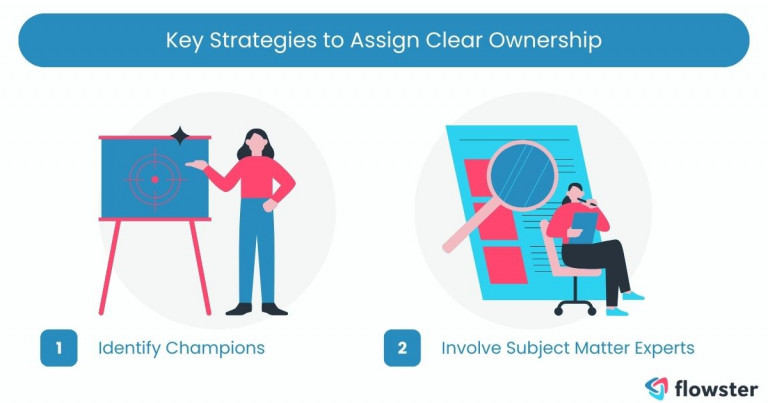
Challenge 6: Difficulty Capturing Tacit Knowledge
One of the biggest hurdles in creating SOPs is capturing the wealth of “tacit knowledge” that resides within your organization. Tacit knowledge is the know-how, experience, and intuition that employees develop over time, often without even realizing it. This knowledge is crucial for performing tasks effectively but can be difficult to translate into written procedures.
- The “We Just Know” Trap: Employees might struggle to articulate the specific steps involved in a task because they’ve become second nature. This “tribal knowledge” can be invaluable but isn’t readily transferable to others.
There are several strategies you can employ to turn tacit knowledge into clear, actionable SOPs:
- Knowledge Capture Interviews: Conduct interviews with experienced employees, asking them to walk you through specific tasks step-by-step. Record these interviews and use them to identify key decision points and best practices.
- Screen Recordings: With employee permission, use screen recording software to capture their workflow as they complete a task. This can be a valuable tool for documenting those “unconscious” actions that contribute to successful outcomes.
- Flowcharts and Mind Maps: Visual aids like flowcharts and mind maps can help break down complex processes and illustrate decision-making logic. These tools can be particularly helpful when dealing with tacit knowledge that involves intuition or troubleshooting.
By using these techniques, you can unlock the hidden value of tacit knowledge and ensure your SOPs capture the complete picture of how tasks are best accomplished.
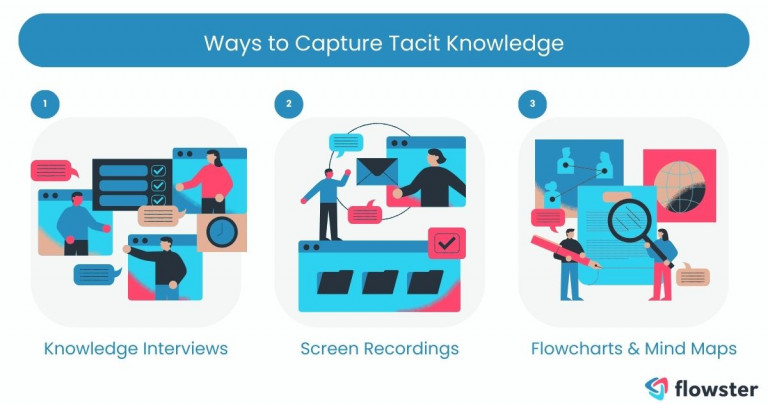
Don’t Let Challenges Hinder Your SOP Success: Reap the Rewards of Streamlined Operations
While creating Standard Operating Procedures (SOPs) might seem daunting at first, the benefits they offer for business growth and efficiency are undeniable. By overcoming the common challenges we’ve explored, you can unlock the true power of SOPs and transform your operations.
Remember, SOPs aren’t about micromanagement; they’re about creating a roadmap for success. They ensure consistency, boost productivity, and empower your team to excel. Don’t let the initial investment deter you; even small steps toward SOP creation can have a big impact.
So, take the first step today! Identify a critical process and start documenting the key steps. You’ll be surprised at how quickly you begin to reap the rewards of streamlined operations and a more efficient, thriving business.
Transform Your Business with Flowster's AI-Driven Automation
Need an easy SOP tool?
Flowster uses AI (artificial intelligence) to make it simple to document your processes, and the Flowster Marketplace contains pre-built workflows and standard operating procedures templates. These templates are designed to meet a variety of business needs and are easily customizable to meet your specific requirements.
Are you in need of assistance? Using our “Done for You” service, our quality and improvement experts will create custom workflows for you. Our team can help you create SOPs from scratch, ensuring that they are fully aligned with your business processes and goals.




